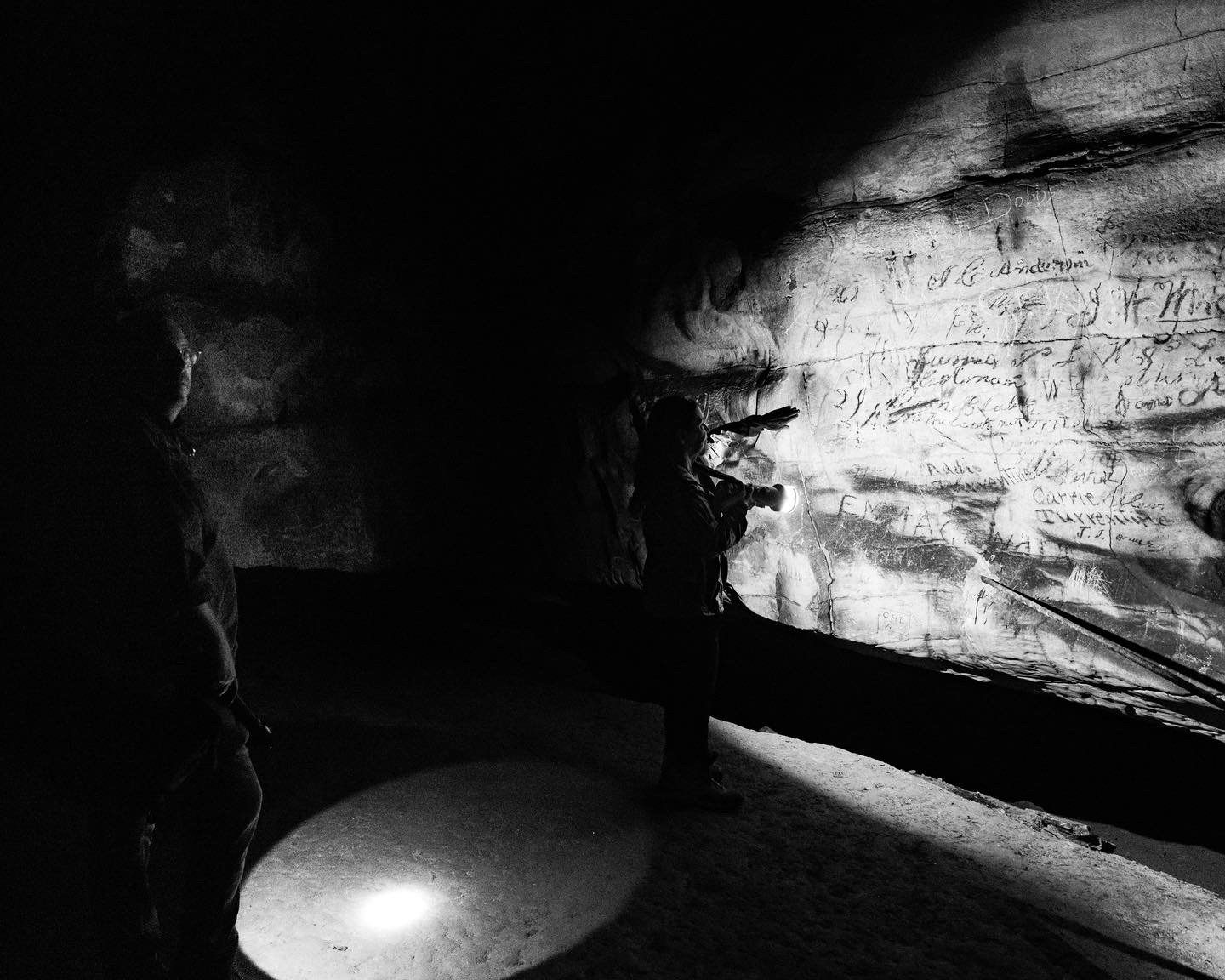Today I joined @jaredragland, @robculpepper_, and @cwnewell on a trip into Manitou Cave in Fort Payne, Ala. (formerly the Cherokee town of Willstown) and it was an overwhelming and beautiful visit. Annette Reynolds, steward of the cave (and founder of the non-profit that protects it), guided us through stalactites, land bridges, and inscriptions from the last two centuries.
The inscriptions included writing using the Cherokee syllabary, created by Sequoyah and recorded inside Manitou Cave. This syllabary system provided the ability to read and write in Cherokee for the first time and it was officially adopted by the Cherokee Nation in 1825.
Huge thanks to Annette.
Below are some scenes from our time in the cave.
Jared also made a post on Instagram about our time in the cave and I thought I’d include his caption here for further context (and better reading).
This week I began tracing the Trail of Tears across north Alabama, and yesterday journeyed a mile underground into Manitou Cave, located at the Cherokee town of Willstown (now Ft. Payne–named after the colonial stockade used to hold Cherokees during the Indian Removal of 1838). Inside Manitou, traces of human activity date back 10,000 years. The cave includes sacred inscriptions written in Cherokee syllabary, which was invented by Sequoyah while he lived in Willstown in the early 1800s. After the Cherokee removal the cave was used as a Confederate encampment and saltpeter mine; by the end of the 19th century industrialists mined the cave for iron and developed the area as a tourist attraction; in the 1920s it was converted into a tourist destination where flappers danced the Charleston in a “ballroom” that featured a wooden dance floor and electric lights; and during the Cold War it was outfitted as a fallout shelter. Through the mid 20th century the site was a roadside attraction but closed after the interstate drew traffic away from Ft. Payne. After decades of neglect the cave is now the focus of grassroots historical and environmental protection directed by Manitou Cave of Alabama, with a mission to “respect, protect, preserve” the cave’s unique geology, diverse biology, and rich history.










